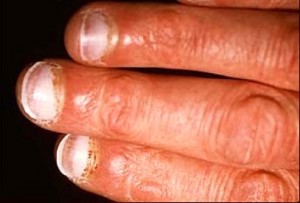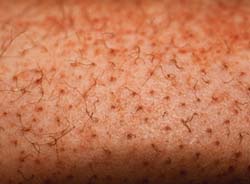Scurvy is a complicated condition resulting from low intake of Vitamin C. Read and know all about the disorder and learn about its possible causes, symptoms, treatment options, prognosis and more.
Scurvy Definition
Page Contents
It is a disorder resulting from an acute deficiency of Vitamin C, or ascorbic acid, in the daily diet.
The condition leads to various problems, such as:
- Gum disease
- Weakness
- Skin hemorrhages
- Anemia
The disease is also known by various other names, such as:
- Scorbutus
- Vitamin C deficiency
- Moeller’s disease
- Cheadle’s disease
People affected by this disorder generally feel depressed and appear pale and partly immobilized.
Scurvy Incidence
This is a rare disease in the United States. The condition is particularly predominant in underdeveloped regions and third-world countries that suffer from a deficiency of Vitamin C. The prevalence is wider in populations that have a low amount of fruits and vegetables as their part of daily diet.
Scurvy History
At one time, the condition was common among seamen and pirates who were in ships and had limited amounts of perishable fruits and vegetables. Such people mainly survived on dried grains and salted meats. Such diets provided their body with little or no Vitamin C and caused Scurvy. The condition was described by Hippocrates, the renowned medical practitioner who is regarded as the Father of Medicine.
In the winter of 1556, an epidemic of Scurvy plagued the European population. The outbreak was later attributed to the deficiency of vegetables and fruits in the winter months of that year. This was one of the earliest reported instances of Scurvy epidemic. But it was not until in 1742 that a British doctor named James Lind stated that there was a definite association between Scurvy and diet. He was the first person to report about this disorder.
Scurvy ICD9 Code
The ICD9 code for this disorder is 267.
Scurvy Causes
Scurvy, or the subclinical form of the disease, results from a deficiency of Vitamin C in the body. In modern Western communities, adults rarely suffer from the condition although older individuals and infants are affected. The process of pasteurization destroys Vitamin C. It is due to this reason that babies who are fed ordinary milk from feeding bottles sometimes suffer from Scurvy in case they are not given adequate amounts of vitamin supplements.
Babies of mothers who consume very high doses of Vitamin C during maternity can suffer from Infantile Scurvy. In infants, the condition is sometimes referred to as Barlow’s disease.
Scurvy Risk Factors
Elderly adults and children who do not get adequate nutrition are the most affected by this condition. The other risk factors for this disease include:
Unhealthy diet
Individuals who neglect their diet on a regular basis, such as illegal drug users, alcoholics, mentally ill or older people are prone to this disease.
Allergy diets
Following diets that are extremely restrictive in an attempt to control specific allergic conditions.
Crash diets
People who follow certain diets that exclude foods high in protein and low in carbohydrate are also susceptible to this disorder.
Eating disorders
Individuals suffering from eating disorders such as Bulimia or Anorexia nervosa are also at risk of developing the condition.
Fussy eating habits
People who are fussy in eating habits, such as not eating vegetables and fruits, can also suffer from this condition.
Smoking
Smokers suffer from additional stress on their body and require more amounts of Vitamin C to cope with the problem. Naturally, they are often found to develop this disease.
Scurvy Symptoms
The signs and symptoms of this disorder can be differentiated into:
Early symptoms
The majority of the early symptoms of the disorder are mild and similar to that of many common ailments. A sufferer may not visit a doctor for remedy under the false assumption that they are suffering from flu or other self-limiting condition.
Some of the non-specific signs of the disease may include:
- Nausea
- Fever
- Diarrhea
- Fatigue
- Loss of appetite
- General feeling of malaise
- Painful muscles and joints
- Small bleeding spots around the hair follicles that can be seen in the skin
Late symptoms
The signs of severe Scurvy are more particular in nature. These may include:
- Loose teeth
- Slow-healing wounds
- Bulging eyes (Proptosis)
- Scaly, dry and brownish skin
- Opening of previously healed scars
- Extremely dry hair that curls and breaks off close to the skin
- Bleeding into the skin (severe and easy bruising)
- Swollen, spongy and purplish gums which are susceptible to bleeding
- Premature obstruction of bone growth (in children and babies).
- Bleeding into the joints and muscles, which results in regions of inflammation over the bones of the legs and arms
In kids, the deficiency can result in painful inflammation of the legs along with vomiting, diarrhea and vomiting. In adults, the initial signs of the condition can include aches, tiredness and weakness.
A common sign of this disorder is the development of small red blood-blisters to larger purple botches on the skin of the legs. Wounds may start healing at a slower pace and the scars that have healed may begin to break down. The gums bleed and swell easily, eventually resulting in loosened teeth. Pain may also occur in the joints and muscle.
Scurvy Diagnosis
The diagnosis of this condition can be conducted with physical examination and the analysis of medical history of affected individuals. Physicians may also ask patients detailed questions about their dietary habits. Diagnostic tests for this disease may include:
- X-rays of joints in areas like the ribs, wrist and knee
- Blood tests, to determine the iron and Vitamin C levels of sufferers
Scurvy Differential Diagnosis
The symptoms of this disorder are easily confused for those of Osteomyelitis. Physicians should distinguish the symptoms of Scurvy from those of Osteomyelitis as well as other similar disorders, such as:
- Acrodynia
- Child abuse and neglect
- Clotting factor deficiencies
- Senile purpura
- Necrotizing gingivitis
- Thrombophlebitis
- Medication side effects
- Vitamin D deficiency and related disorders
- Platelet dysfunction (eg, immune thrombocytopenic purpura)
- Disseminated intravascular coagulation
- Hypersensitivity vasculitis (Leukocytoclastic vasculitis)
- Hematologic malignancies (such as Acute Lymphoblastic Leukemia)
- Autoimmune diseases (like Henoch-Schönlein purpura, systemic lupus erythematosus, Sjogren syndrome)
Some other disorders that should also be taken into consideration include the following:
- Septic Arthritis
- Rheumatic Fever
- Rheumatoid Arthritis
- Pediatric Syphilis
- Pediatric Poliomyelitis
- Meningococcemia
- Osteomyelitis
- Retinoblastoma Imaging
- Rocky Mountain Spotted Fever
Scurvy Treatment
The disorder is comparatively easy to cure. An affected individual needs to increase his or her daily intake of Vitamin C. A physician may recommend use of a short-term course of supplements, generally a minimum of 250mg on a daily basis, to make relief from the symptoms faster. Bleeding in the gums and the skin is likely to stop within 24 hours after the beginning of treatment. Muscle and joint pain may take a few weeks to go away.
A Vitamin C-rich diet and the short-term intake of supplements may help cure other nutritional deficiencies, such as anemia. Physicians may need to address underlying problems like alcoholism or eating disorders.
In some cases, physicians may also recommend patients that they consult a dietician for a proper diet that can help them recover from this disorder.
Scurvy Prognosis
If the disorder is recognized at an early stage, treatment with Vitamin C is effective in bringing about a successful outcome for patients. If left untreated, however, the disease may cause death of sufferers.
Scurvy Complications
The growth of the long bones in the legs and arms is typically reduced in babies and young kids suffering from this disease. This is due to the reason that Vitamin C deficiency prompts the growth plates to harden prematurely in the bones.
Untreated scurvy may give rise to complications in sufferers of all ages. The problems include:
- Anaemia
- Heart attack
- Death
Unless addressed in time, the disorder may give rise to life-threatening consequences for its sufferers. Naturally, it is important to cure the condition as early as possible.
Scurvy Prevention
The condition can be prevented by increasing the intake of Vitamin C in the daily diet. The human body is unable to manufacture this vitamin from other compounds. This vitamin needs to be consumed as a part of the daily diet as the body cannot store the component for extended periods of time. Animals, however, do not face this problem as their body is able to synthesize their own Vitamin C.
The dietary sources of this component include:
- Kidney
- Liver
- Vegetables, specifically green vegetables such as broccoli, capsicum, cabbage and spinach
- Fruits such as lemons, limes, strawberries, oranges, grapefruits, tomatoes, mangoes, kiwifruits, and blackcurrants
Intake of supplements containing the RDA of Vitamin C can also help sufferers prevent a deficiency. Infants who are weaned to cow’s milk from breast milk require a supplement comprising of Vitamin C.
Precautions for taking Vitamin C
The intake of large amounts of Vitamin C can be harmful for sufferers. It is advised that you never take Vitamin C in more than the recommended dosage without the knowledge and approval of your doctor.
An overdose of Vitamin C can give rise to various problems, which include:
- Nausea
- Diarrhea
- Abdominal cramps
- History of kidney stones
- Kidney stones in people suffering from kidney disease
- Reduced effect of certain prescription drugs, such as some blood-thinning medications
It is advised that you get in touch with your physician to avoid such complications.
Scurvy Pictures
Take a look at these images to know how the skin of people affected by this disorder appears to view.
Picture 1 – Scurvy
Picture 2 – Scurvy Image
If you suspect yourself or any of your family members to be suffering from Scurvy, seek medical attention on an early basis and increase your daily intake of Vitamin C. Proper treatment of the disease can help you recover from the disorder while it is still at an early stage, and avoid all its possible future complications.
References:
http://www.nlm.nih.gov/medlineplus/ency/article/000355.htm
http://en.wikipedia.org/wiki/Scurvy
http://www.betterhealth.vic.gov.au/bhcv2/bhcarticles.nsf/pages/Scurvy
http://www.nhs.uk/Conditions/Scurvy/Pages/Symptoms.aspx


